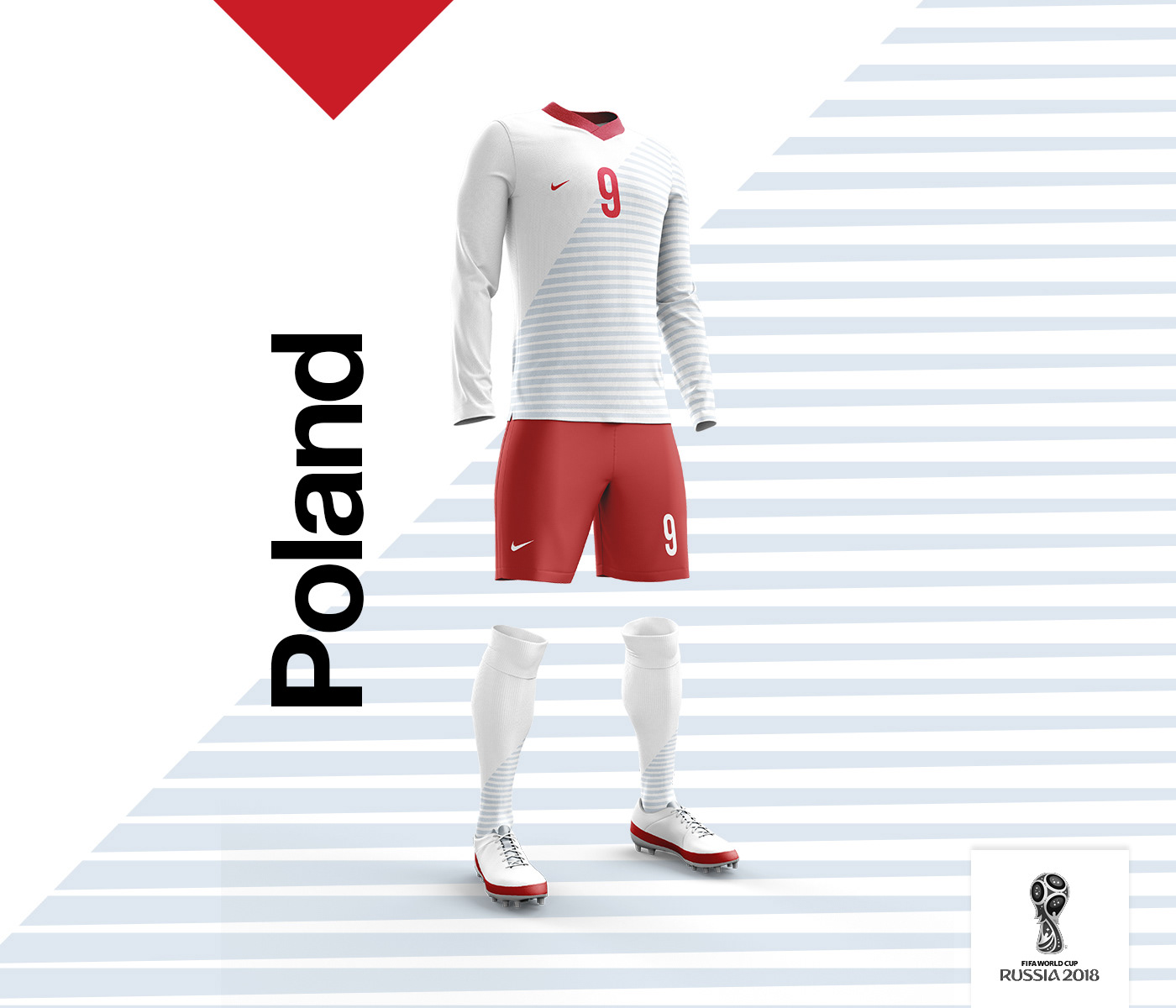The World Cup doesn’t just give fans a feast of international football, over the years it has also provided an opportunity to check out foreign kits. Thanks to the World Cup we have become familiar with some truly iconic designs; the orange of Holland, the pale blue and white striped Argentinian shirt (although 1986’s infamous ‘hand of God’ goal was scored by Maradona whilst wearing the country’s change strip of royal blue) and of course the famous yellow, green and white of Brazil. Also, back in the 1970s and early 1980s when the majority of kits in the UK were produced by homegrown suppliers such as Umbro, Admiral and Bukta we were introduced, via the World Cup, to kits made by the likes of continental brands such as Puma and Adidas with their silky fabrics, strange flag-based colour combinations and skimpy shorts which since 1974 also featured numbers.The 1966 World Cup kits were dominated by Umbro with all but one team wearing strips by the famous Manchester-based sportswear firm. But with manufacturers’ logos not present on shirts in those days this fact was lost on the casual observer. By 1974 logos began to creep onto players’ jerseys, but still in a random, haphazard way, often appearing only on the shorts.The Argentina 1978 tournament was the first World Cup to feel the full force of football branding. It was alive with logos, adidas’ omnipresent three-stripe trim and, thanks to Scotland, Umbro’s diamond taping. Smaller squad numbers were added to the front of player jerseys in 1994’s USA World Cup along with players’ surnames on the back. 2002 saw further graphics added to jerseys in the form of tournament sleeve patches.Due to the fact the tournaments are beamed around the world on TVs of all shapes, sizes and vintages, for many years FIFA insisted that each match feature a “darkâ€Â shirt and a “lightâ€Â shirt, for the benefit of those people who may be watching on black and white TVs. This rule seems to have been relaxed in recent years though.Today the football kit world is a global market and with kits by foreign manufacturers now commonplace the strips worn in FIFA’s four-yearly football extravaganza, now dominated by Puma, Nike and adidas, don’t appear quite so exotic. Still, there’s plenty to keep the kit fan hooked as the majority of apparel designers use the World Cup to showcase the forthcoming season’s designs.


Fifa 20 Retro Kits
If the recent success of the Since 96 retro collection didn’t make it obvious, Galaxy and MLS fans in general love the vintage gear. Which makes today’s announcement from EA Sports announcing the availabilty of retro MLS kits all the more sweeter. MLS retro kits are now available in @EASPORTSFIFA #FIFA21. Northern Ireland 1990-93 Away. One of the more abstract patterns ever created, the ‘90 Northern Ireland away kit is a Craic’ing (so sorry) design. It reintroduced blue to the ‘Norn Iron’ away shirts, a reminder of Ireland's early heritage, and was used for the qualifiers of Euro 92. By NextGenHD On Jun 2, 2021 - 7:24 AM. EA Sports, through social media, has announced that MLS retro kits are now available in FIFA 21. The kits in question can be redeemed by completing the objectives available in the FUT mode. Win as One in EA SPORTS FIFA 21, powered by Frostbite. Whether it’s on the streets or in the stadium, FIFA 21 has.
Fifa 20 Retro Kits
The World Cup doesn’t just give fans a feast of international football, over the years it has also provided an opportunity to check out foreign kits. Thanks to the World Cup we have become familiar with some truly iconic designs; the orange of Holland, the pale blue and white striped Argentinian shirt (although 1986’s infamous ‘hand of God’ goal was scored by Maradona whilst wearing the country’s change strip of royal blue) and of course the famous yellow, green and white of Brazil. Also, back in the 1970s and early 1980s when the majority of kits in the UK were produced by homegrown suppliers such as Umbro, Admiral and Bukta we were introduced, via the World Cup, to kits made by the likes of continental brands such as Puma and Adidas with their silky fabrics, strange flag-based colour combinations and skimpy shorts which since 1974 also featured numbers.The 1966 World Cup kits were dominated by Umbro with all but one team wearing strips by the famous Manchester-based sportswear firm. But with manufacturers’ logos not present on shirts in those days this fact was lost on the casual observer. By 1974 logos began to creep onto players’ jerseys, but still in a random, haphazard way, often appearing only on the shorts.The Argentina 1978 tournament was the first World Cup to feel the full force of football branding. It was alive with logos, adidas’ omnipresent three-stripe trim and, thanks to Scotland, Umbro’s diamond taping. Smaller squad numbers were added to the front of player jerseys in 1994’s USA World Cup along with players’ surnames on the back. 2002 saw further graphics added to jerseys in the form of tournament sleeve patches.Due to the fact the tournaments are beamed around the world on TVs of all shapes, sizes and vintages, for many years FIFA insisted that each match feature a “darkâ€Â shirt and a “lightâ€Â shirt, for the benefit of those people who may be watching on black and white TVs. This rule seems to have been relaxed in recent years though.Today the football kit world is a global market and with kits by foreign manufacturers now commonplace the strips worn in FIFA’s four-yearly football extravaganza, now dominated by Puma, Nike and adidas, don’t appear quite so exotic. Still, there’s plenty to keep the kit fan hooked as the majority of apparel designers use the World Cup to showcase the forthcoming season’s designs.


Fifa Retro Kits 2020
Hello👋and welcome to my channel my name is Fifa Flair and I am a casual FIFA player and trader, I make videos such as Fifa 20 player reviews or FUT Champs r. Today we take a look at the new FIFA 20 Title Update 16. This update fixes the lineup bug, adds new retro (classic) kits in FUT and adds a new connection set.